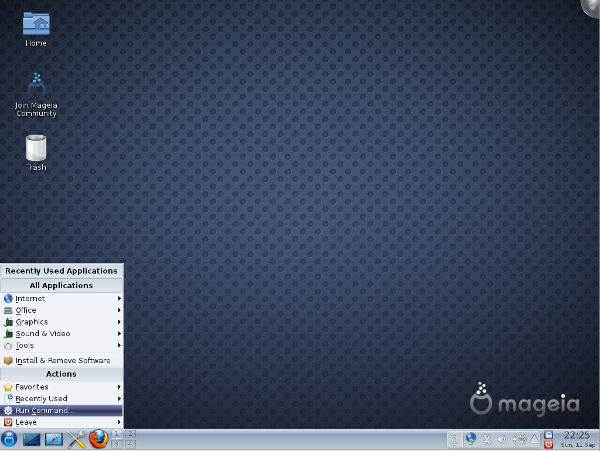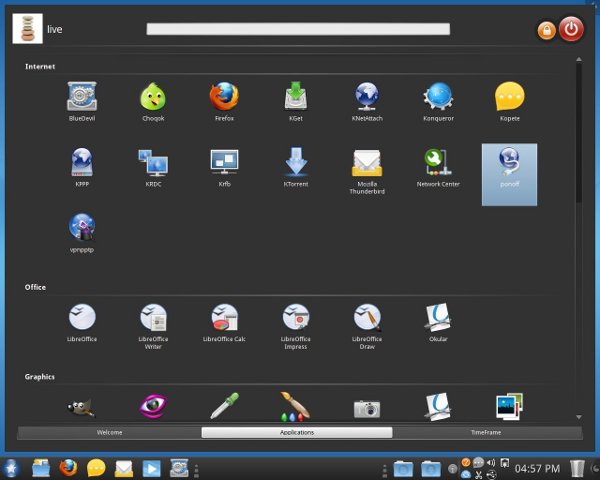As first thing i must say that I’ve never used this “line” of distributions, in the past when i wanted to use .rpm packages I used the Red Hat family Distributions, and then I moved to .deb distributions and Gentoo.
So It’s my first time with these 2 distributions, let’s see if Mageia has surpassed the “source distro”, or Mandriva it’s still leading in the Desktop.
A small intro of the 2 distributions (courtesy of Wikipedia)
Mageia is the name of a non-profit organization and Linux distribution. On September 18, 2010, a group of former Mandriva employees and community supporters announced that Mandriva Linux was being forked and a new, community-driven distribution would be created, called Mageia.
Mandriva S.A. is a publicly traded (symbol:MLMAN) Linux and open source software company with its headquarters in Paris, France and development center in Curitiba, Brazil. Mandriva, S.A. is the creator and maintainer of Mandriva Linux, describing itself as a “project initiator and a skills organizer in the Open Source arena”, and a founding member of the Desktop Linux Consortium.
Release date
Mageia 1 has been released on 2011/06/01
Mandriva 2011 has been released on 2011/08/29
Download
Mandriva it’s availabe with 1 only 1 flavour, KDE. I’ve read their release note and they have chosen to use only KDE and don’t give support to other Desktop Environment
Deprecation
GNOME, Xfce and other Desktop Environments (DE) and Window Managers (WM) are no longer included in the official Mandriva packages. Contribution packages from the Mandriva community are available for these desktop environments however. Starting from Mandriva Desktop 2011 only KDE Plasma Desktop is officially supported. If you need Mandriva with another DE or WM you can use unofficial packages or distributions prepared by community members (which are described below).
I’m used to Debian, Gentoo, or Ubuntu, so having only 1 DE. supported officially, sound as limitating for me, anyway i’ve downloaded it.
Mageia it’s available in 2 CD there is a version for KDE and one for Gnome. In their release note i’ve read that Mageia it’s a desktop-agnostic distribution so it’s possible to use also XFCE or LXDE, much better.
I’ve downloaded KDE release for a better comparison with Mandriva.
Installation
Not much to say on the installation of both distributions, in both you’ll have the usual questions about keyboard, timezone, language and the setup of the partitions, after that both will start the installation process. At the end you’ll have to reboot and on first boot you can setup root password and 1 normal account.
First boot and Look and feel
Mageia it’s a classic KDE desktop Environment (I’ve downloaded this version of Mageia), you have the applications menu in bottom left, than going to the right the launcher of some programs, the selector of workspace, the notification area and then on the bottom right the clock.
Other information:
After the installation, at the first login Mageia uses 240 MB of RAM and 2.6 GB of disk.
At the moment the update of the system has downloaded and updated 402 packages.

Mandriva, first thing i’ve noticed it’s that the boot seem a bit slower, i’ve not took the time, but seem slower than Mageia. Perhaps it’s due to the fact that Mandriva has just switched to Systemd ?
Mandriva it’s a KDE DE too, but has some peculiar characteristics:
You have no icons at all on the desktop, and when clicking on the bottom left you don’t have the classic KDE kickoff menu, but there is a classic menu done by Russian team of developers ROSA Lab. It’s similar to the one in Gnome 3, you have 3 tabs in the first the icons of the suggested programs and the one you have used recently, in the second all the applications and the third should be an “history” of all programs, documents, images, movies you have opened, they call it Timeframe
TimeFrame is a new utility for Nepomuk. It allows you not to think in which folder you saved your photography, video or documents. You need only a date. If you know the date you will find everything. Information in TimeFrame is represented in “cloud” form, thus you can easily find what you need.
Also the bottom bar it’s a custom program done by Rosa Lab, and it’s called RocketBar, it seem that Mandriva uses only 1 Workspace.
After the installation, at the first login Mandriva uses 400 MB of RAM and 6 GB of disk.

Rosa Menu - Tab applications
Programs list
This is a small list of the main programs available after the installation:
Mageia
Kernel 2.6.38
KDE SC 4.6.3
LibreOffice
Firefox + Konqueror
Kmail
Gimp
Amarok
Kopete
Mandriva
Kernel 2.6.38
KDE 4.6.5
LibreOffice
Firefox + Konqueror
Thunderbird
Shotwell
Clementine
Pitivi video editor
choqok (microblogging client)
Ktorrent
Kopete
In short, the 2 distributions have similar software, Mandriva install much more software as default (6 GB VS 2.4 GB), this is not so bad for Mageia as long as you can install what is missing from the official repository.
Conclusions
This is been really a quick test run of these 2 distributions, so i could have missed something, but if I had to install tomorrow one between these 2 i’d go for Mageia. In general i like the idea of the fork done by the community, and their result it’s a polished and simple KDE distribution, i’ve not saw anything particular or thrilling in Mageia, just a KDE Desktop working fine, with the basic programs installed and everything you would expect from a modern GNU/Linux.
On the other side i don’t like too much all these customizations done from an external group, but perhaps this will turn as a good thing for the whole GNU/Linux community, who knows.
Anyway, Mandriva general aspect looks good, and some people could love these customizations, i’ve even not found in the graphical menu the options to update the system..shame on me.
Further articles on these distributions:
Darkduck on Mandriva and Mageia
Mandriva 2011 VS Mageia 1
Popular Posts:
- None Found

I never thought I’d say this. I’ve been using Mandriva since 7.1. 2011 is a huge disappointment that pushes me to consider something else. Sad since I also use Mandriva Enterprise Server on systems I manage there. 2011 has a 1.6 GB iso vs 2010.2 iso that fills a DVD. There are no install time choices and apparently not even a paid “powerpack”. The only powerpack on the store is 2010.2 One is locked in to a positively awfully complex environment that completely breaks with traditional desktops – and no choice to go with LXDE – which was one of the huge improvements in 2010.x. It’s simply horrible, and is also impossible to install this on some of my older hardware.